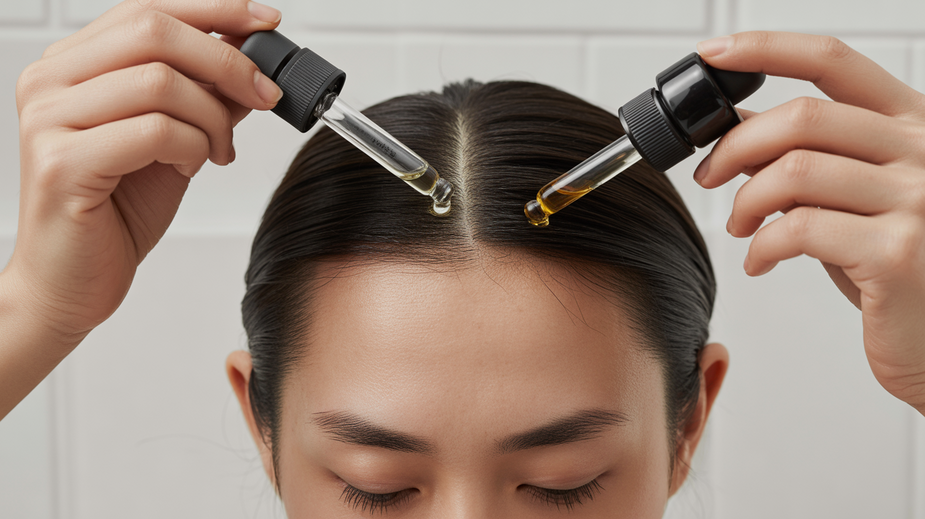
The Layering Principle: How to Adapt Japanese Skincare Layering to Scalp Care
Avoiding Common Layering Pitfalls
Adopting a layered approach to scalp care, inspired by Japanese skincare principles, can yield fantastic results. However, just like with facial skincare, common mistakes can hinder effectiveness and potentially cause issues. Being aware of these pitfalls is key to mastering your routine and ensuring your scalp truly benefits from each nourishing layer.
One major trap is product overload. While layering is about building hydration and treatment step-by-step, applying too much of each product can leave your scalp feeling greasy, weighed down, or lead to product build-up. A simple, effective technique to combat this is incorporating a brief, gentle 60-second massage during or after application. This not only helps the product absorb better into the scalp but also stimulates blood circulation, which can benefit follicle health. Focus on working the product in rather than just applying it superficially. ✨
Another crucial aspect often overlooked is timing. Rushing through your layers without allowing proper absorption can dilute products, reduce their efficacy, or cause them to sit on the surface instead of penetrating. Aim to wait approximately two minutes between applying different products. This gives each layer time to settle in, allowing the active ingredients to start working before the next step is applied. Think of it like allowing paint to dry slightly before applying a second coat – it ensures a smoother, more effective finish. This waiting period is especially important when moving from lighter, water-based textures to thicker serums or treatments. ⏳
Finally, be mindful of product composition, particularly when it comes to silicone-based products. Silicones, often found in styling products or certain conditioning treatments, can create a barrier on the scalp’s surface. While sometimes beneficial for smoothing or protecting, applying them early in your routine (e.g., immediately after cleansing or before water-based essences) can prevent subsequent treatments and hydrating layers from reaching the scalp and hair follicles. If you use products with significant silicones, they are generally best applied later in your routine, perhaps as a final protective step on the hair strands or sparingly on the scalp if formulated for that purpose, but never as the first product after cleansing in a layering routine. Always check ingredient lists and understand how different formulations interact.
By avoiding these common pitfalls – product overload, insufficient absorption time, and incorrect silicone application – you can maximize the benefits of your layered scalp care routine, ensuring healthier, more balanced scalp skin.
To visually understand some fundamental techniques for effective scalp care layering, consider watching this informative video:
Measuring Long-Term Scalp Ecosystem Benefits
Adopting a layered approach to scalp care, inspired by Japanese skincare principles, isn’t about seeking instant results. It’s about patiently cultivating a healthier scalp ecosystem over time. Just as facial skincare yields its best results through consistency, your scalp requires dedication to rebalance and strengthen. So, how do you truly know your layering efforts are paying off in the long run?
Measuring the success of your adapted routine involves tracking key indicators that reflect the underlying health of your scalp environment. These signs show that the delicate balance of sebum production, hydration, and microbial flora is improving. 🌱
Here are specific ways to observe and measure the long-term benefits:
- Track Reduced Flaking Over 28-Day Cycles: One of the most visible signs of scalp imbalance is flaking. A healthy scalp maintains its barrier function and turnover rate. By consistently following your layering routine, particularly focusing on hydration and gentle exfoliation (if included in your adapted steps), you should observe a significant reduction in dandruff or dry flakes. Tracking this improvement over a typical skin cell turnover cycle (around 28 days) provides a realistic timeframe for noticeable change. For example, keeping a simple diary or taking photos can help you monitor progress over this period.
- Observe Decreased Wash Frequency Needs: Is your scalp feeling overly oily or dry within a day or two of washing? An imbalanced scalp often necessitates frequent washing to manage excess sebum or alleviate discomfort. As your layering routine restores balance, you may find you can comfortably extend the time between washes. This decreased dependency on frequent cleansing is a tangible benefit and a strong indicator of a healthier, more regulated scalp environment.
- Monitor Follicular Strength Through Hair Density: While dramatic hair regrowth takes significantly longer, a healthy scalp provides the optimal environment for hair follicles to thrive. Over time, consistent layering that addresses scalp health can lead to reduced hair breakage at the root and potentially support stronger, healthier strands emerging from the scalp. Observing less hair fall during washing or styling, or noticing a subtle improvement in perceived hair density or thickness over several months, reflects the positive impact on your follicular health.
By monitoring these indicators, you gain valuable insight into the effectiveness of your scalp layering routine. Patience and consistency are paramount, as these improvements in your scalp’s ecosystem develop gradually, leading to lasting benefits for both your scalp health and the quality of your hair. Remember, cultivating scalp health is a journey, not a race.
